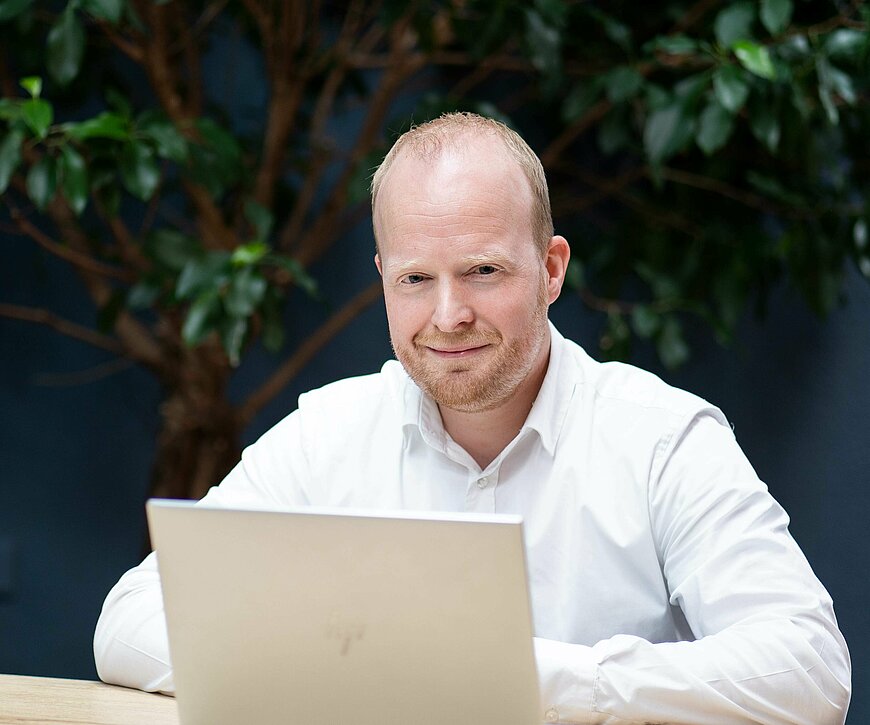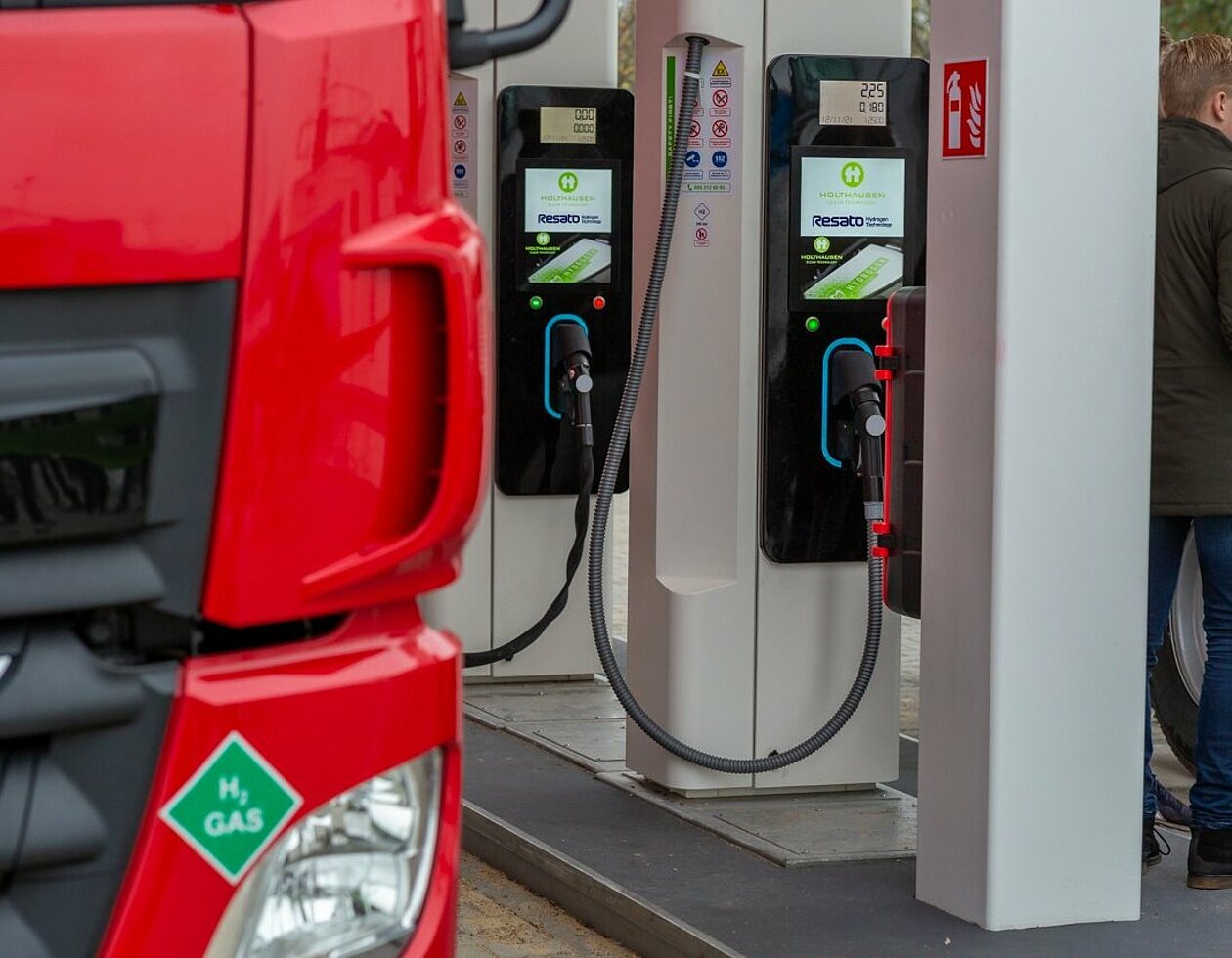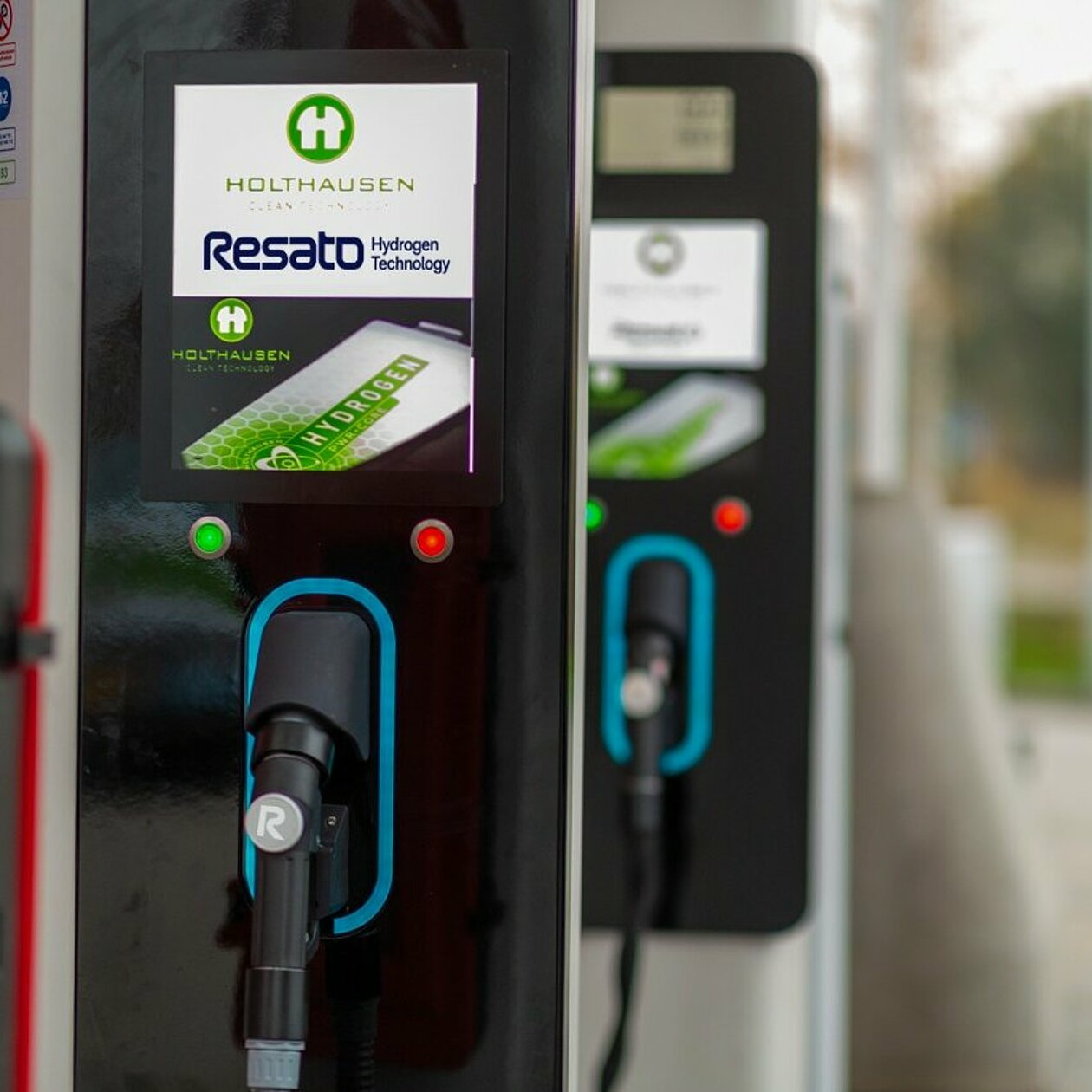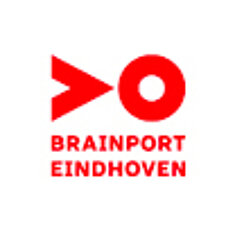Jendrik van Dijk - Resato Hydrogen Technology

‘We have all the knowledge, expertise and facilities in the Netherlands, so we should do it here.’
Please introduce yourself!
My name is Jendrik van Dijk, and I am Development Manager at Resato. I am responsible for development of hydrogen fueling stations.
Resato has been founded in 1991 and specializes in development and manufacturing of high-pressure technology. We started, of course, with oil and gas and later started using water jet cutters. We then made the shift towards new energy. High-pressure technology is essential in hydrogen applications. To that end, we are developing components and systems and are supplying hydrogen fueling stations all over the world. Furthermore, we are building test rigs. We are unique in the sense that we develop and build our own technology. All components needed in the installation, the valves, compressors, piping, and everything included in the systems; it is all manufactured by Resato.
The technology is what makes this job interesting. It is high-tech and we are dealing with high pressure of up to 1,000 bar. That is not something you learn at college or in university, but only in practice. Resato is a growing company, which currently employs seventy people. We have the ambition and knowledge to continue to grow enormously. The fact that we are scaling up in combination with the technology and the enormous drive of everyone involved, makes Resato an exciting place to work. I am already looking forward to being part of that growth.
What is the objective of the Green Transport Delta-Hydrogen pillar you are working on?

The GTD-H project consists of seven work packages, each with its own area of focus regarding the transition towards hydrogen. Jointly with the other partners in our work package, we are developing the hydrogen infrastructure. You need infrastructure, because if you cannot refuel you cannot drive. To properly organize the fueling infrastructure we have to face a few challenges. The fueling technology must be reliable to ensure it always works properly. Availability is also important; where is the hydrogen located, in what quantity and is it of demonstrable quality. Transactions must also be correct; customers must refuel with the right amount and right quality of hydrogen. So, work package seven is therefore centered around the following aspects: fast delivery, interaction between vehicle and fueling station, the right price for the amount of hydrogen consumed and excellent quality of hydrogen. These are all conditions for making hydrogen available to the public.
There are different types of hydrogen, which can be used as a fuel or energy carrier for mobility. When setting up the infrastructure, we mainly focus on gaseous hydrogen. If you want vehicles to run on hydrogen, you also have to focus on creating fueling stations in practical locations. Potential users are more inclined to start using hydrogen-powered vehicles if they can rely on a solid and wide network of fueling stations. Making it possible to travel long distances with heavy transport, passenger cars and also buses, for example. Hydrogen-powered vehicles are excellently suitable for intensive use and for long distance travel because hydrogen does not take up much space and is relatively lightweight.
The intention as laid down in the Trans-European Network is very interesting for us as a company. It stipulates that on European routes a hydrogen fueling station will be available for heavy transport every 200 km. We can supply these stations. An incentive like this is needed to be able to get truly started.
Our customer base ranges from small SMEs with local fueling stations, to internationals and ecosystem developers. That is why we have created modular products that can be adapted to meet the customer’s need.
Why is it so important for you to participate in this project?
To be able to build a hydrogen infrastructure, there is still some work that needs to be done. By tackling this work together, we can do it better and faster. For example, take the hydrogen transfer from fueling station to vehicle. That seems simple. But agreements need to be made on how the hydrogen is transferred. Hydrogen heats up when a vehicle is refueled, because of the reverse Joule-Thompson effect. So, in some cases you need to cool the hydrogen first, otherwise the tank will get too hot. Meaning that the fueling station, vehicle and supplier need to interact and agreements are needed about this interaction. To do this properly, you must jointly establish protocols. For large trucks, there are no international protocols yet. In collaboration with a number of manufacturers, we used our own experience to set up and validate our own protocols as part of this project. In addition, we are developing the fueling technologies. So, we are currently working on a wide range of technologies to ensure faultless user experience.
As part of the GTD-H project, we designed a skid to be able to simulate a truck. The test rig allows us, for example, to test whether the fueling protocol is working properly to ensure better and faster refueling. Time is always an issue, especially in transportation. A faster fueling speed is therefore important. But it is also important that the tank is refueled with the right quantity and quality of hydrogen. We are jointly tackling such issues during this project. The interesting part of the collaboration is that all parties have something to gain. For example, VSL made the test rig for validating the amount of hydrogen. This required technical interaction, allowing us all to learn from one another. This project makes for a steep learning curve for all companies. Not only for us, but for everyone involved. We are learning, experimenting, and doing it together. If you are learning together, on balance, everything will go faster.

The speed at which the hydrogen network is growing varies greatly within Europe. The Netherlands currently has about fourteen large and several small hydrogen stations. In terms of fueling speed, the small stations are comparable to fast charging of electric cars. At the large stations, you can refuel your car in two to three minutes. And it takes about ten to fifteen minutes to refuel a bus or truck. Because the stations are spread throughout the country, the Netherlands already has a hydrogen fueling network, albeit on a limited scale. Currently, development often starts with pilots of hydrogen-powered vehicles. In The Hague, for example, dozens of passenger cars, cabs, some trucks, and tractors are running on hydrogen. And there are some regional initiatives with hydrogen-powered buses, such as in the Achterhoek and Groningen. One of the conditions for buying a hydrogen-powered vehicle is a hydrogen fueling station in the vicinity.
Outside the Netherlands, things sometimes move much faster. In countries like Germany, they were earlier in adopting hydrogen solutions. And we recently sold several installations in Sweden because of an incentive from the local government. The great thing is that we are expanding from the Netherlands. Our ultimate ambition is to conquer Europe and then the rest of the world.
How will these innovations affect the Dutch citizens?
As part of the GTD-H project, we are currently working on an important innovation that you may not recognize right away. Naturally, you want to receive and pay exactly the amount of hydrogen you expect to buy. Everything has to be right. Everyone takes for granted that when you weigh a kilo of apples in the supermarket, it really is a kilo. It is a legal requirement that the scale indicates the correct amount. And what applies in the supermarket also applies to hydrogen. To measure the amount of hydrogen, you need a measuring instrument. And that is exactly what we are developing as part of this project. The same also applies to the quality of the hydrogen. To protect the vehicles, the quality is also subject to stringent requirements.
In the longer term, we will also see more hydrogen-powered buses and trucks. First in the big cities to meet the requirements for cleaner transportation. From a market perspective, the transition towards hydrogen is going very fast. But if you look at the total number of hydrogen-powered vehicles on the road, the transition is still rather slow. I hope everyone recognizes that hydrogen is one of mobility’s key pillars. Hydrogen is emission-free, efficient, and safe. We put a lot of effort into making it that way. Right now, hydrogen-powered cars are still unique, but you're going to see more hydrogen-electric vehicles in cities and on the road. As a result, we are reducing our transport emissions. That is the outcome of this transition.
What parties would you like to work with to achieve success and what are the topics people can contact you for?
Human resources are the big challenge in the entire engineering industry. People who want to study and work in engineering are entering a growing, innovative sector. It is fantastic to be able to contribute to sustainable development. We need many people in software development, mechanics, electronics and mechatronics, assembly of installations, and maintenance. And this industry also has a lot to offer to people who like inventing new things and figuring things out. There are so many new developments. All companies that take part in the GTD-H project recognize that there is a huge need for technically skilled people. So it would be great if we could enthuse many people to help us realize the energy transition.
Resato is located in the north of the Netherlands and from there we are also trying to enthuse future employees to start a career in technology. For example, jointly with the innovation cluster Drachten, we - as high-tech manufacturing companies – are jointly approaching the future labor market, such as colleges, universities, or schools that provide secondary vocational education. We recently organized a girls' day to introduce girls from high school to technology. We also offer a lot of opportunities for students and graduates. That is always a win-win situation. At Resato, we also want to grow in terms of staff in the next seven to eight years. We intend to increase our current number of staff by tenfold. Those are vast numbers.
Of course, we are trying to continue cooperation as part of the GTD-H. This also shows that there is an extensive ambition for growth in the Dutch manufacturing industry. We see huge opportunities for the high-tech and manufacturing industry in the Netherlands. That is not only interesting for employees and companies, but also for our country as a whole. Everything we invest in those industries now, will pay for itself many times over. We do not depend on foreign parties for hydrogen production. And we are very much capable of developing this technology in the Netherlands. We have all the knowledge, expertise, and facilities in the Netherlands, so we should do it here.
